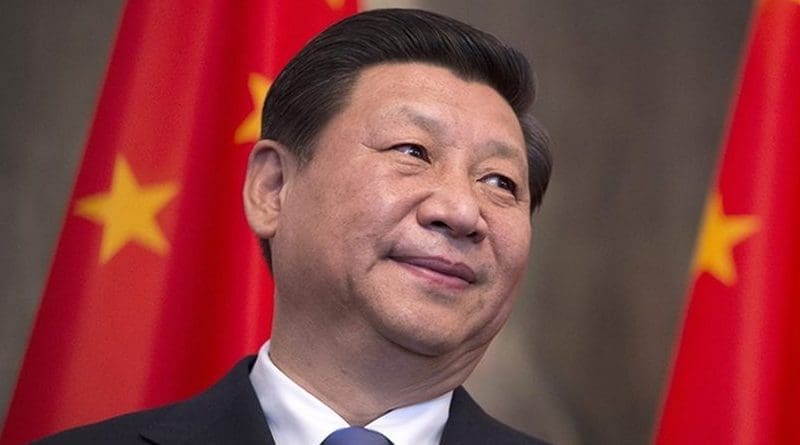China’s Strong ‘Secular’ Performance On Track – OpEd
Understandably, there was great interest in President Xi’s Davos address. Despite great global challenges, China’s economic performance reflects long-term strength, with strong data on trade and investment, and new resiliency.
In his January 2017 address at the World Economic Forum (WEF), Chinese president Xi Jinping promoted global economic interdependency warning that protectionism would produce no winners. A year ago, Chinese he called for both greater global efforts in the fight against an unprecedented public health crisis and a renewed commitment to multilateral cooperation.
In his third WEF address, President Xi noted that the recovery of the world economy is predicated on the defeat of the once-in-a-century pandemic and the new inflation risks of inflation. As Xi cautioned: “If major economies slam on the brakes or take a U-turn in their monetary policies, there would be serious negative spillovers. They would present challenges to global economic and financial stability, and developing countries would bear the brunt of it.”
Prior to Xi’s speech, Western media featured gloomy expectations over the 4th quarter growth data. Yet, China topped impressively its 2021 growth (8.1% over the target of “above 6%”), despite expected deceleration in the 4th quarter.
Recent elevated regulatory activity and emphasis of “common prosperity” will reinforce sustained and more inclusive growth in the long-term – as evidenced by strong data on trade and investment, reforms in capital markets and new resiliency.
Strong trade and investment performance
In 2021, China’s exports and imports exceeded $6 trillion for the first time. The economy continued its recovery over the past year, despite slowing export growth on the back of a stronger yuan. Global prospects remain challenging, due to the Omicron variant, supply disruptions and higher costs, and weakening demand.
In December, China’s trade surplus widened to a record high of $95.5 billion; over $20 billion more than in the same month a year earlier. For the full year, the trade surplus widened to $676 billion, the highest on record with exports surging 29.9% and imports 30.1%. Exports continued their double-digit growth for the 15th month.
For 2021, China’s trade surplus with the US was $397 billion; 25% higher than in 2020. In light of the ongoing US trade wars and geopolitical containment efforts against the mainland, the achievement is extraordinary.
China’s performance has been reinforced by strong capital flows, thanks to the mainland’s encouragement of foreign direct investment (FDI).
Actualized foreign direct investment (FDI) into China reached a new record in 2021, when the FDI increased 14.9% year-on-year; or 20.2% in US dollar terms. In relative terms, countries and regions along the routes of Belt and Road Initiative (BRI) booked a 29.4% rise in their investment in China, while investment flows of the Southeast Asian economies (ASEAN) soared 29%.
Opening of capital markets
Heralding promising future, China’s strong performance has been reinforced by further opening of capital markets.
By December 2021, overseas investors had raised their holdings of mainland stocks and bonds by over 11% since the end of 2020, according to the People’s Bank of China (PBOC). As Reuters headlined, “foreign holdings of China government bonds smash record in November on index inclusion.”
Indeed, November marked the first full month of phased inclusion of China’s government bonds in FTSE Russell’s World Government Bond Index (WGBI). The inclusion could eventually drive $130 billion of index-related foreign inflows into the mainland bonds over a 36-month period.
Recently, US Treasuries have traded around 1.86%, as opposed to Chinese government bonds around 3.39%. As the Federal Reserve will hike rates in the coming months, US yields are likely to increase. Then again, so may Chinese yields. Moreover, as the Fed may respond hastily and belatedly to America’s highest inflation in 40 years, it could stir more volatility in the market. In contrast, Chinese bonds represent a vital diversification instrument and promising future.
Yuan’s appreciation
Last October, the PBOC stated it was phasing out the use of the countercyclical factor, launched in 2017 to contain yuan’s depreciation. A more hands-off stance toward the exchange rate has fostered appreciation. The yuan may face a rougher ride in 2022, due to normalization by overseas central banks.
Nonetheless, all these trends contributed to an intriguing development in late 2021, when Chinese yuan seemed to “decouple” from the US dollar.
The bilateral relationship between the two currencies had been consistent since the mid-2010s, as measured by the US Dollar Index (DXY). When the value of the US dollar increased, that of the Chinese yuan decreased. In the last quarter of 2021, the inverse relationship changed. US dollar and Chinese yuan appreciated in tandem.
The shift was reflected by the CFETS RMB Index; China’s version of the US Dollar Index. It measures the value of the yuan against a basket of 24 currencies, including the US dollar and the euro. The weakness of other major world currencies pushed Index from 94.8 in December 2020 to a high of 102.8 at the end of November and remains around 102.1.
Signs of new resiliency
Obviously, China’s recent data has been fostered by the mainland’s strong trade performance, impressive investment and promising capital flows. Moreover, the Omicron variant and its potential offspring pose new challenges to global prospects.
Even if the Fed’s impending rate normalization would constrain capital flows to emerging markets, the continued opening of the mainland’s financial sector is likely to offset some of the pressure. Furthermore, FDI into China is likely to prove resilient, due to capital inflows from the Belt and Road and ASEAN economies.
China’s strategic focus is on enduring secular trends, not fleeting quarterly results.
A version of the commentary was published by China Daily on Jan. 17, 2022

